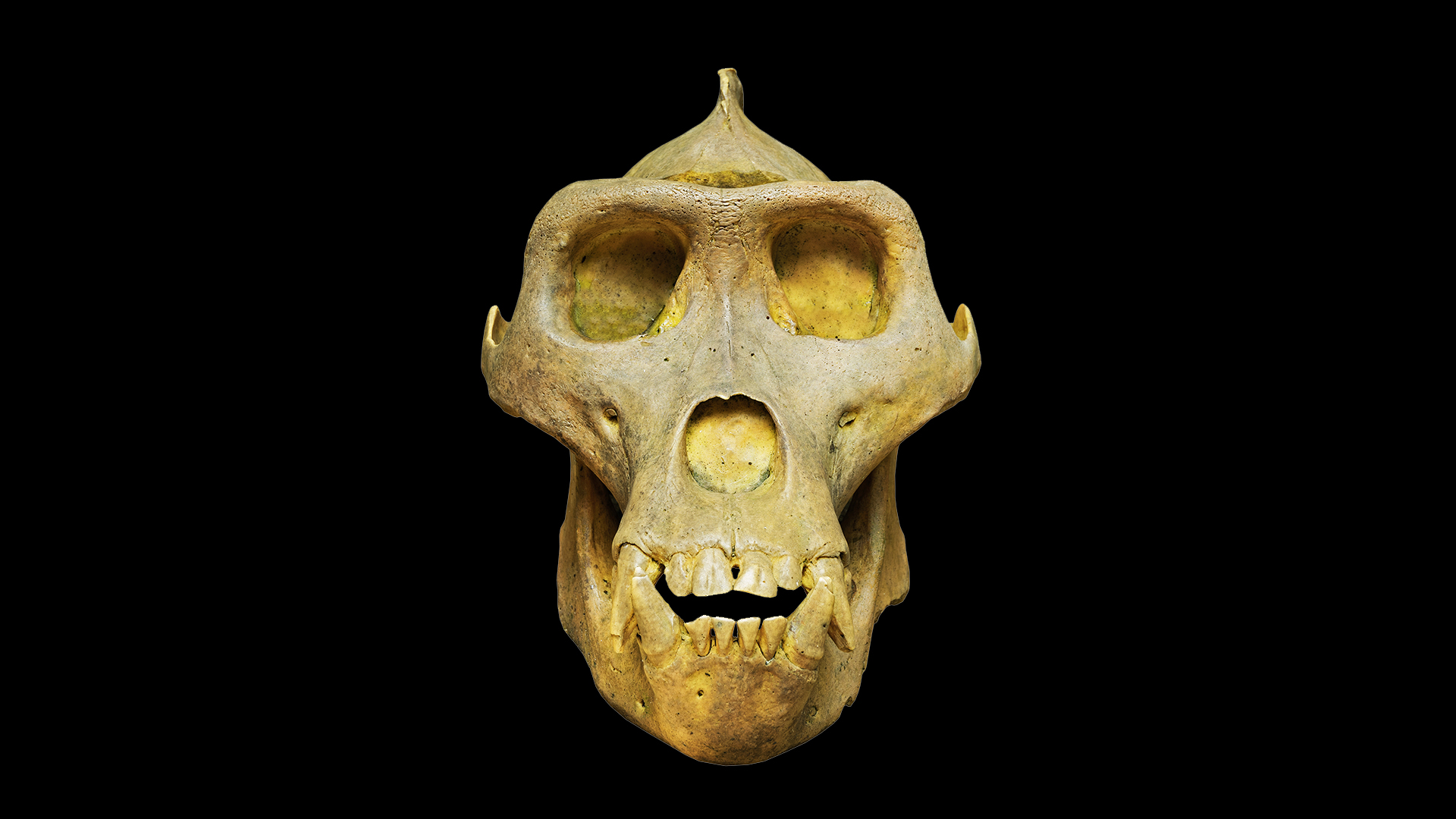Scientists dismiss Coyote Peterson's 'large primate skull' discovery as fake
The skull is likely a cast, experts say.

A "large primate skull" was allegedly found in British Columbia by American YouTuber Coyote Peterson, according to social media posts he shared on Thursday (July 7). In those posts, Peterson wrote that he had hid the discovery "for several weeks" from government officials and any others who might "try to cease [sic] our footage" of the excavation. However, experts told Live Science that Peterson's claim is highly suspect and that secretly extracting and transporting animal remains across national borders may be illegal.
"I'm sure these pics will be taken down… as will probably the video by government or state park officials… but the skull is safe," the posts read. "I don't know if its what you all think it might be… but I cannot explain finding a primate skull in the Pac Northwest without wondering! What do you believe?" (There are no large primates that currently live in North America — other than humans — and though tales of elusive forest-dwelling hominids such as Bigfoot have persisted for centuries, there is no evidence to suggest such creatures exist.)
Peterson, best known for his YouTube channel "Brave Wilderness" and for hosting a series called "Coyote Peterson: Brave the Wild" on Animal Planet, also wrote that he'd release footage of the skull on YouTube this weekend. But in the meantime, scientists have reacted to his alleged discovery on Twitter, questioning the credibility of the claim and suggesting that Peterson's actions — as described in his posts — may cross ethical and legal lines.
Jonathan Kolby, a science consultant and National Geographic Explorer with expertise in wildlife trade, wrote that "Smuggling any primate specimens into the United States, even if 'found' in the wild is illegal. Pinging @COYOTEPETERSON for your information.... because @USFWS or @CBP might not be ok with this, even if you think you found Bigfoot...."
Related: Ancient surgical implant or modern-day fake? Peru skull leaves mystery.
Yinan Wang, a graduate student in the Geospatial Intelligence program at Johns Hopkins University, geologist and author of "The 50 State Fossils: A Guidebook for Aspiring Paleontologists" (Schiffer Publishing, Ltd., 2018), noted that Peterson's skull closely resembles a cast of a gorilla skull that's available for purchase on AliExpress. In the tweet, Wang includes a side-by-side comparison of the AliExpress product and the photos shared by Peterson.
"This is undoubtedly a gorilla skull, as is obvious from numerous anatomical details, and as verified by a list of experts," Darren Naish, a vertebrate paleontologist and science communicator in the U.K., told Live Science in an email. "Also, it seems to be identical to commercially available casts of a specific gorilla skull."
Get the world’s most fascinating discoveries delivered straight to your inbox.
"We can straight away shut down the idea that it might be a real skull of an unknown primate. Nope. It's a cast of a known species," Naish said.
In his posts, Peterson said that he's still in possession of the skull and that the specimen is safe and awaiting primatologist review. The "secure location" of the skull isn't specified, but if it's in the U.S., Peterson's posts would suggest that he somehow smuggled the specimen across the U.S.-Canadian border.
If the skull were indeed genuine, such an act would be illegal, because transporting "biological specimens" and wildlife products or parts — like bones — into the U.S. typically requires permits from the U.S. Department of Agriculture, Centers for Disease Control and Prevention and/or the U.S. Fish and Wildlife Service (USFWS), according to U.S. Customs and Border Protection.
Furthermore, "the movement of primate specimens is regulated by CITES" — an international treaty aimed at ensuring that international trade of wild animal and plant specimens does not threaten the survival of those species, Naish told Live Science. "You might argue, then, that it's very irresponsible to imply that a person might find a primate specimen in the wild and then just move it around."
Breaking news I've seen on Facebook and Insta: Coyote Peterson is claiming to have discovered the skull of a non-human primate in British Columbia. Is talking about this as if it's for real... pic.twitter.com/YPlmuiHdmMJuly 7, 2022
And if Peterson found the skull in a national park in Canada, his actions would be illegal under the Canada National Parks Act and National Park General Regulations, according to Parks Canada. These regulations state that it's unlawful to remove any "natural objects" from a park without a permit, and that trafficking wildlife, living or dead, from a park is also an offense. And in a scenario where the skull could be considered a fossil, laws in British Columbia forbid individuals from collecting vertebrate fossils and require that any "unusual or rare specimens" be reported to the Royal B.C. Museum, a local museum or the B.C. Fossil Management Office, the Government of British Columbia states.
On top of the theoretical questions of legality, the "conspiracy-mongering" language in Peterson's posts worsens the situation, Naish said.
"I'm told that Coyote Peterson does this sort of thing fairly often as clickbait, and that this is a stunt done to promote an upcoming video," Naish said. "Maybe this is meant to be taken as harmless fun. But in an age where anti-scientific feelings and conspiracy culture are a serious problem it — again — really isn't a good look. I think this stunt has backfired."
Originally published on Live Science.

Nicoletta Lanese is the health channel editor at Live Science and was previously a news editor and staff writer at the site. She holds a graduate certificate in science communication from UC Santa Cruz and degrees in neuroscience and dance from the University of Florida. Her work has appeared in The Scientist, Science News, the Mercury News, Mongabay and Stanford Medicine Magazine, among other outlets. Based in NYC, she also remains heavily involved in dance and performs in local choreographers' work.


